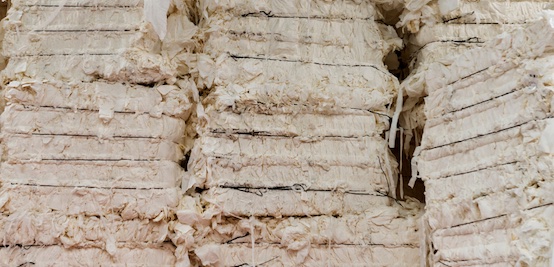#Market Analysis & Forecasts
Construction fabric market valuation set to total US$ 18.0 billion by 2034 amid rising demand for sustainable building materials, analyses Future Market Insights
Demand is predicted to remain high for needle-punched nonwovens during the forecast period, rising at a CAGR of 3.9%. This can be attributed to the rising adoption of needle punched nonwoven fabrics in applications like tensile structures and canopies due to their high strength, durability, and low cost.
Multiple factors are anticipated to boost growth of the construction fabric market during the assessment period. These include:
+ Expanding building and construction activities
+ Growing demand for sustainable and green building materials
+ Increasing need for lightweight and portable structures
+ Rising focus on enhancing building aesthetics and design
+ Rapid urbanization, coupled with booming residential sector
Construction fabrics are becoming quite popular in the building and construction sector. This is due to their lightweight, low-cost, and eco-friendly features. They are increasingly used in a wide range of applications, including tensile structures and canopies, thereby fueling their demand.
Rapid population growth and urbanization are attracting investments in residential and commercial sectors. This, in turn, is expected to create a conducive environment for the expansion of the global construction fabric industry during the forecast period.
Construction fabrics are widely used to create different structures, such as convention centers, stadiums, and airports. Similarly, they find applications in infrastructure projects like tunnels and bridges, fueling their sales globally.
Rising demand for sustainable building materials is emerging as a key market shaping trend. Construction fabrics are often seen as a more sustainable option than traditional building materials like steel and concrete, as they can be made from recycled materials or natural fibers.
Key Takeaways from the Report:
The global market for construction fabrics is set to expand at 4.1% CAGR through 2034.
Based on type, the needle-punched nonwoven segment is poised to exhibit a CAGR of 3.9% from 2024 to 2034.
By material, the PVC segment is expected to grow at a CAGR of 3.7% through 2034.
The United States market revenue is predicted to total US$ 3.2 billion in 2034.
Demand in South Korea will likely increase at 5.0% CAGR through 2034.
Japan is anticipated to register a CAGR of 5.3% between 2024 and 2034.
Construction fabric sales in China are projected to total US$ 2.8 billion by 2034.
"The global construction fabric industry is witnessing a shift towards bio-based material, with key players focusing on using natural fibers like cotton for making construction fabrics. This shift towards eco-friendly solutions will likely play a key role in fostering market growth during the next ten years,” says Nikhil Kaitwade, Associate Vice President at Future Market Insights (FMI).
Competitive Landscape:
Saint-Gobain, Sioen Industries NV, Low & Bonar, Sattler AG, Koninklijke Ten Cate, Fibertex Nonwovens A/S, Serge Ferrari, HIRAOKA & CO., ENDUTEX COATED TECHNICAL TEXTILES, Seaman Corporation, and Stylepark AG are key construction fabric companies listed in the report.
Key construction fabric manufacturers are creating new fabrics with improved features to cater to evolving needs of the building & construction industry. They also implement strategies like distribution agreements, collaborations, acquisitions, partnerships, and mergers to solidify their market positions.
Recent Developments:
In June 2023, Saint-Gobain announced the acquisition of Building Products of Canada Corp. to strengthen its leadership in the light and sustainable construction segment.
In October 2022, Seaman Corporation and Dupont unveiled a new Shelter-Rite High Light Transmission architectural fabric.
Get More Insights:
In its latest report, Future Market Insights (FMI) offers an unbiased analysis of the global construction fabric market, providing historical data from 2019 to 2023 and forecast statistics for the period 2024 to 2034. To understand the global market potential, growth, and scope, the market is segmented based on type, material, application, and region.
More info:
https://www.futuremarketinsights.com/reports/construction-fabric-market














